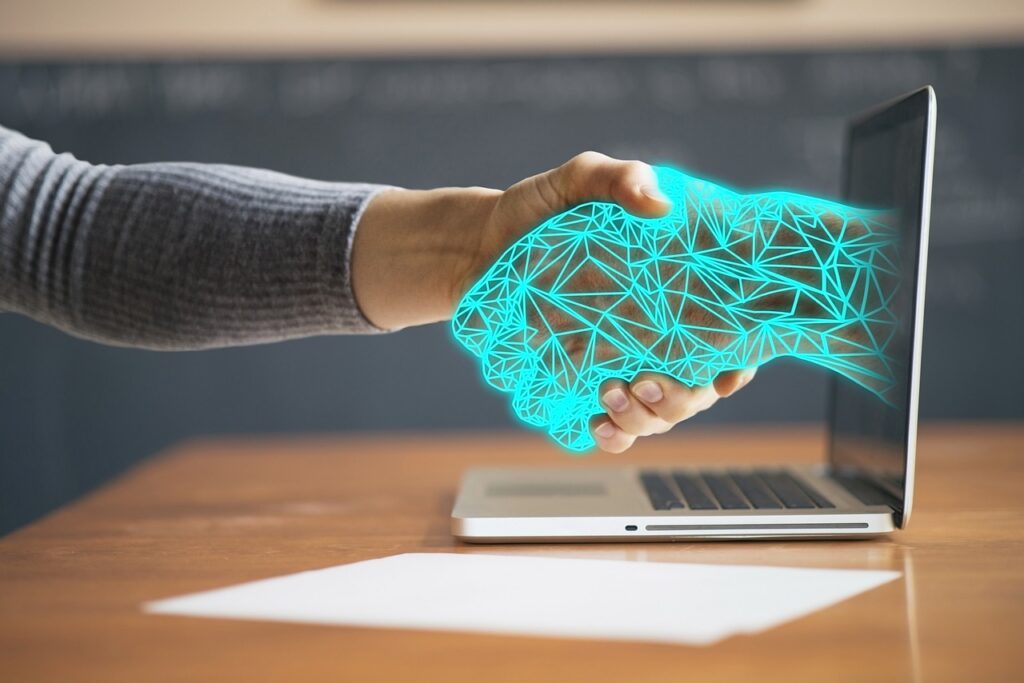
Will machine translation replace the needs of human translators? This question has been trending for many years. Recently, with the exponential growth of technology and the development of large language models such as ChatGPT, more and more professionals are concerned about losing their jobs. More often, I can see translators saying that the profession is dying, and they need to follow another path to make their living.
In my opinion, AI-driven tools can be extremely beneficial in our work. They can help us be more productive, fulfill monotonous and tedious tasks, and many other automated activities. But can they replace us? From my point of view, the answer is “No” and will be “No” for the years to come. Why? Because they can be trained to do anything, but they cannot be trained to be humans – to have feelings, emotions, thoughts.
Although I cannot deny the importance of technology, I still believe there are many aspects that only humans can understand. At the end of the day, we are the ones that invented and developed machine translation, and we should be the ones to direct it. Below are some of the aspects to support my opinion that AI will not replace human translators.
1. Cultural Understanding
I agree that machine translation can produce relatively good results in certain types of texts. These texts usually have simple content, use “dry” language (without emotions involved) and contain mainly instructions (Even in these cases post-editing by a human translator is a must).
But what happens when it comes to marketing content and transcreation where adaptation and cultural understanding are crucial?
Machine translation does not consider cultural nuances that differ between different countries. In this case, it is not only about words, but about the impact of colors, terms, and images used and how they will resonate with the target user. And to achieve the desired effect, you need to know the culture and be able to “feel and live” it.
I believe Nina Sattler-Hovdar described it perfectly in her book “Get Fit For the Future of Transcreation”:
No matter how much experience a professional has in transcreating engaging copy, it will always be a lengthy process with little to no potential for shortcuts or automation. Transcreation is never something you can do at the push of a button, ever.
2. Sensitive Information
Many times, companies need to translate confidential documents that contain sensitive information. Is this information safe when using AI-automated tools? Not really.
Using machine translation carries security risks and there are many cases of security breaches and leaks which can have detrimental consequences. We have all heard about the case of the oil giant Statoil that discovered their confidential information has been typed on a translation website and can now be found on Google (full article: https://www.nrk.no/urix/warning-about-translation-web-site_-passwords-and-contracts-accessible-on-the-internet-1.13670874).
Another example is ChatGPT. Many companies warn against entering sensitive information in similar large language models, as it can be risky. Remember that the primary goal of AI is to be trained based on human input and information provided by us. So, it makes sense that they use our data for developing these models.
Finally, let’s not forget that we talk about machines here. Even with the most advanced and augmented technologies, glitches can happen, and they can cost a lot. So, think well before choosing to hand over your sensitive information to a machine, rather than a human!
3. Consistency
Consistency is of utmost importance in translation. Imagine that you are a provider of industrial and electronic solutions, and your products appear with different names in each product description. Isn’t this confusing for the consumer? Of course, it is, and it has a terrible impact and leaves a negative impression.
I think human translators are better at keeping consistent terminology throughout texts than machines. First, they use translation software to keep termbases and translation memories for each client. Creating a termbase requires a highly skilled linguist who will research the terms, record the specialized terms, and decide when these terms should be used and when they shouldn’t.
Second, the human translator will manually scan the text for consistency and notice the cultural nuances, while AI cannot do this. It can check for consistency; however, it will never adapt the specific terms and understand why in some situations, the term cannot be used. Why? Because, it cannot think and does not understand the context, the culture and how words can have different meanings for different people.
So, will AI replace human translators? Technology is changing all the time and we need to change too. Hence, we must adapt to our ways of work and learn to use AI smartly. Machines will not replace human translators, but they need to coexist and collaborate with them for better efficiency and productivity.
I hope you enjoyed reading this post! If you would like to share or add anything else, feel free to do it in the comments.
 Adriana Nesheva ([email protected]), an English to Bulgarian translator for beauty and fashion brands.
Adriana Nesheva ([email protected]), an English to Bulgarian translator for beauty and fashion brands.
